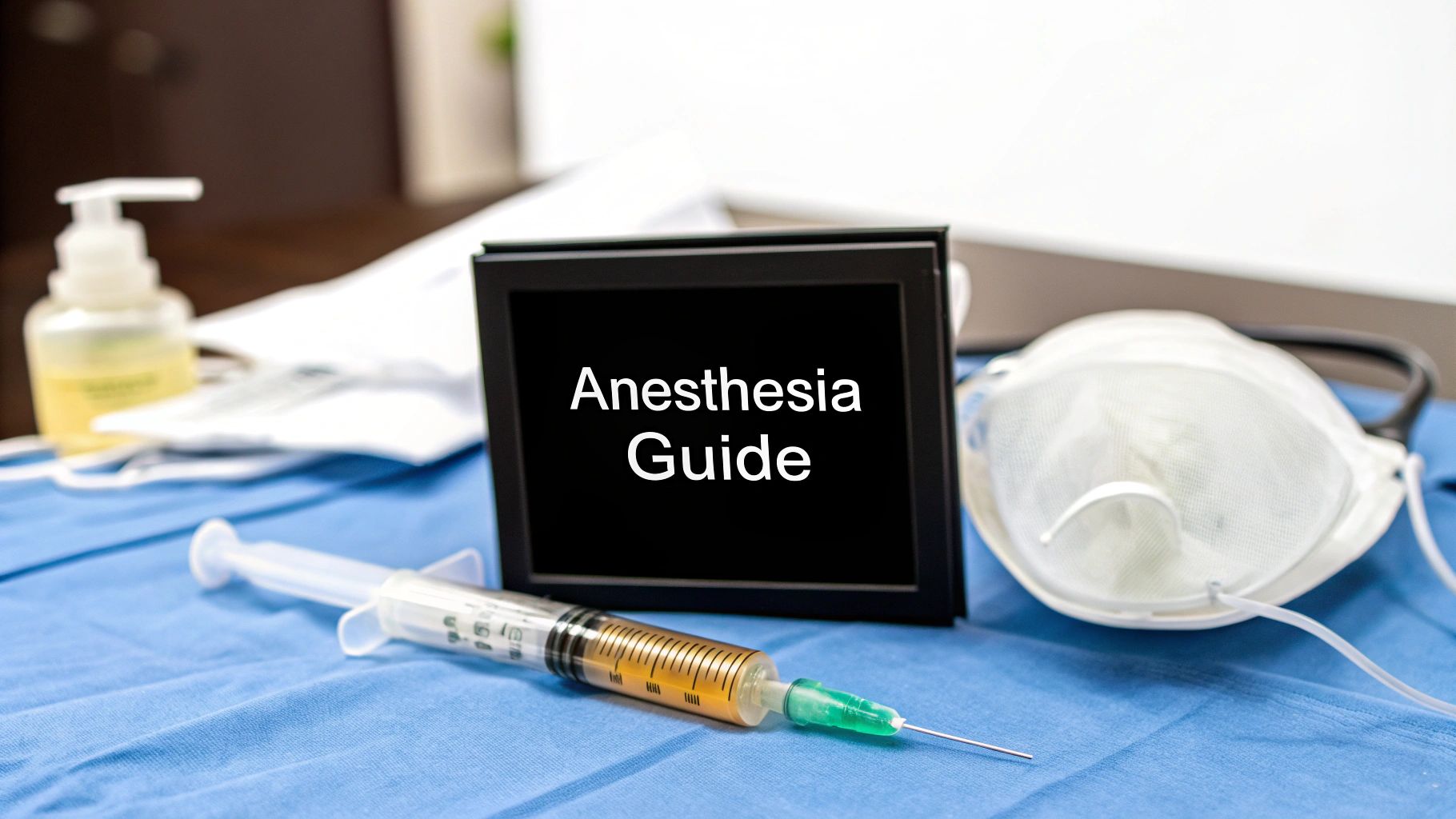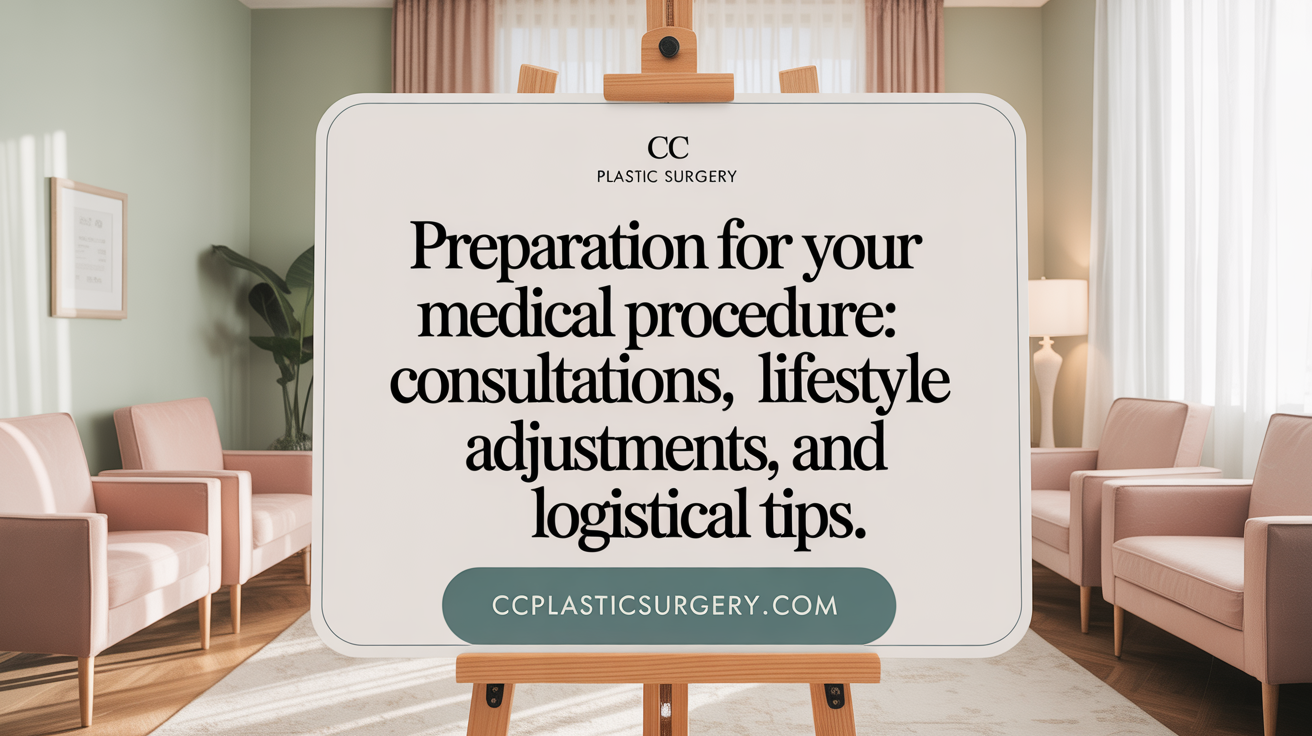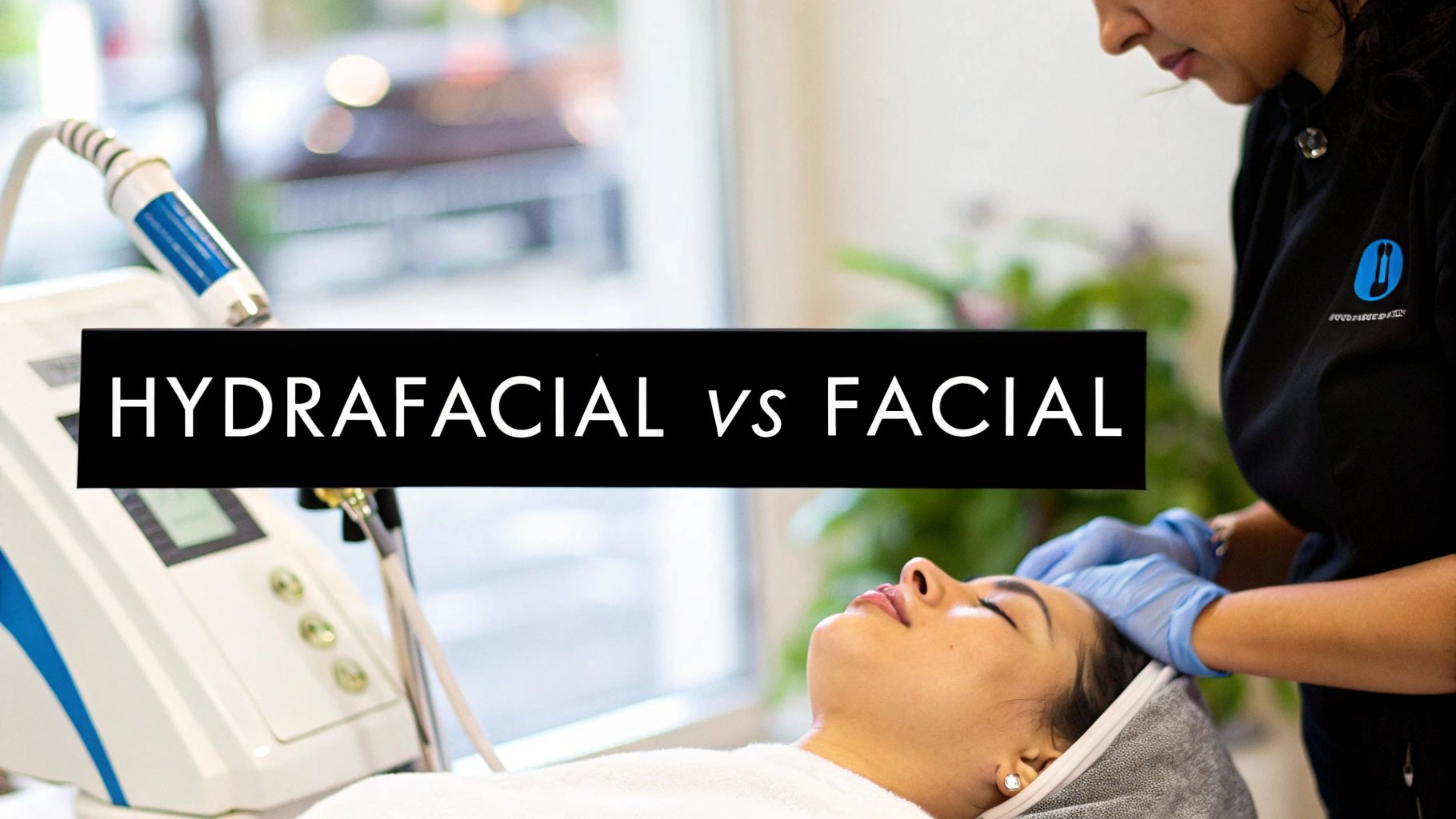
October 12, 2025
Anesthesia Types for Surgery A Patient's Guide
Discover the main anesthesia types for surgery. This guide explains general, regional, local, and sedation to help you prepare for your procedure.
Aug 24, 2025

Breast augmentation surgery is a widely sought cosmetic procedure aimed at enhancing breast size, shape, and symmetry. Whether chosen to restore volume lost after childbirth or weight fluctuations, correct asymmetry, or simply for aesthetic enhancement, this surgery can significantly boost confidence and self-esteem. Understanding the entire journey—from preparation and surgical options to recovery expectations and risks—is crucial for anyone considering this procedure. This guide covers essential information to help manage expectations, reduce anxiety, and support informed decision-making.

Breast augmentation offers several procedures and techniques tailored to meet individual needs and preferences. One of the most common methods involves the insertion of breast implants, which can be filled with saline, silicone, or structured gel, often called "gummy bear" implants. These implants come in various shapes, such as round or teardrop, and surface textures—either smooth or textured—each offering different aesthetic and safety benefits.
Surgeons also choose where to place these implants. The two primary options are subglandular (above the pectoral muscle) or submuscular (beneath the muscle). This decision depends on factors like the patient’s anatomy, desired look, and tissue coverage.
An alternative to implant-based augmentation is fat transfer. This procedure involves liposuction to harvest fat from other parts of the body, which is then purified and injected into the breasts to increase size and improve contour. While less invasive, fat transfer typically results in a smaller enhancement and may require multiple sessions.
Before selecting a procedure, a comprehensive consultation with a qualified plastic surgeon is crucial. They can evaluate the patient’s anatomy, discuss goals, and recommend the most suitable approach to achieve natural-looking results with minimal risks.
Additional tools such as 3D imaging technology and trial bras help patients visualize potential outcomes before surgery, facilitating informed decision-making. Overall, understanding the variety of options available enables individuals to choose a personalized approach that aligns with their aesthetic goals and safety considerations.

A comprehensive preoperative consultation is a crucial step in the breast augmentation journey. During this appointment, your surgeon will discuss your goals, such as desired size and shape, and review your medical history. They will examine your breasts, assess your anatomy, and explore implant options including size, shape, and placement. Visual tools like try-on bras or 3D imaging may be used to help you visualize potential outcomes.
Before surgery, your healthcare provider will review your medical history and possibly recommend blood tests or other evaluations. You will need to disclose all medications, supplements, and over-the-counter drugs you take. Certain medications, especially blood thinners, aspirin, anti-inflammatory drugs, vitamin E, and fish oil, should be stopped at least two weeks prior to surgery to reduce bleeding risk. Smoking should be ceased several weeks before the procedure, as it impairs healing.
Selecting the right implant involves understanding the differences between saline, silicone, and gummy bear options. Your surgeon will help you choose a size that complements your body and meets your aesthetic goals. During the consultation, try-on sessions with special bras or visualization tools can assist in making an informed decision. It’s important to establish realistic expectations about the final appearance.
Lifestyle adjustments are essential before surgery. Quitting smoking is strongly advised, as nicotine impairs blood flow and delays healing. Additionally, stopping blood-thinning medications and supplements at least two weeks beforehand minimizes bleeding and bruising. You may be asked to modify your diet, avoid alcohol, and stay well-hydrated as part of your preparation.
Your surgery will be scheduled with clear instructions. It’s recommended to arrive at the surgical center at least one hour early. Ensure you have arrangements for transportation home afterward, as you will be under anesthesia and unable to drive. Plan to wear loose, comfortable clothing that opens in the front. Bring all necessary documents, including your ID, insurance info if applicable, and any pre-surgical paperwork.
Prepare a recovery area at home with essentials like prescribed medications, pain relievers such as Tylenol, stool softeners, and supportive garments like a medical compression bra. Stock up on easy-to-prepare, bland foods and fluids to stay nourished. Arrange for someone to support you in the initial days post-surgery, especially for help with daily activities and transportation to follow-up appointments.
On the day of your procedure, you will meet the anesthetist and receive general anesthesia or IV sedation. The surgery typically lasts 1-2 hours, and as an outpatient procedure, you will go home the same day. Post-operative recovery involves monitoring for immediate side effects, managing pain, and following your surgeon’s instructions carefully. After the procedure, you should expect some swelling, soreness, and tightness, which will gradually improve over the coming weeks.

Breast augmentation is usually performed under general anesthesia, meaning the patient is completely asleep during the procedure. Sometimes, IV sedation combined with local anesthesia may be used, depending on the patient's and surgeon's preferences. The surgery typically lasts between one to two hours, making it manageable within an outpatient setting.
Surgeons choose incision sites carefully to minimize scarring. Common locations include the inframammary fold (beneath the breast), periareolar (around the nipple), or transaxillary (armpit). After making the incision, the surgeon creates a pocket within the breast tissue or under the pectoral muscle, which serves as a space for the implant.
Once the pocket is prepared, the chosen implant—either saline or silicone—is inserted into the breast through the incision. Surgeons position the implant either above the muscle (subglandular) or beneath the pectoral muscle (submuscular), based on individual needs and aesthetic goals.
The procedure is typically outpatient, so patients go home the same day. After surgery, patients are monitored in a recovery area to ensure stability, manage pain, and observe for immediate complications like bleeding or excessive swelling.
Depending on the case and patient health, the surgery may be performed under general anesthesia, where they are completely unconscious, or IV sedation, where they remain semi-conscious but relaxed. The choice influences the anesthesia team involved and preparation requirements.
Primary surgeries usually take about one hour, while revision surgeries—due to scar tissue or altered anatomy—may extend to two hours or more. The duration depends on the complexity of the procedures and the number of adjustments needed.
This detailed process ensures that each step is carefully planned and executed, aiming for natural-looking results and patient safety.

The healing process usually lasts about 4 to 6 weeks, during which patients slowly return to their normal routines. In the first days following surgery, swelling, bruising, and discomfort are common. These symptoms gradually improve as swelling subsides mostly within the first two weeks.
Early on, patients are encouraged to walk small distances and rest adequately. Light activities are generally permissible, but strenuous exercises, heavy lifting, or upper body workouts should be avoided for at least 4 to 6 weeks to prevent implant displacement or increased swelling.
By weeks 3 to 6, most swelling decreases substantially, and patients typically see an improvement in comfort and appearance. Full recovery is usually expected by 3 to 6 months, when final results become visible. Following surgeon instructions—such as wearing supportive garments and refraining from smoking or alcohol—helps ensure optimal healing and implant settling.
Recovery from breast augmentation unfolds over roughly 6 to 8 weeks, with significant milestones occurring in the initial phase.
First 1-2 weeks: Patients experience the most soreness, swelling, tightness, and bruising. Breasts may feel firm and sit high on the chest. Incision sites are monitored for signs of infection or complication.
Week 3-4: Swelling decreases further, and the breasts start to shift into a more natural and comfortable position. Patients feel less discomfort and can often return to work if the job isn’t physically demanding. Gentle walking and light activity are encouraged.
Week 6: Most swelling is gone, and the breasts look softer and more natural. Scars continue to fade, and patients can gradually begin more vigorous activities, but heavy lifting remains restricted.
Up to 6 months: Final results, including shape, size, and scar appearance, are typically finalized. The implants have settled into their final position, and patients enjoy a more natural breast contour. Complete healing and optimal aesthetic outcomes are expected by this time.
Overall, adherence to post-surgical guidelines is essential for a smooth recovery, reducing risks of complications and ensuring the best possible results.

Breast augmentation, while generally safe, carries certain risks that patients should be aware of. The most common complications include infection, bleeding, implant rupture, capsular contracture (hardening around the implant), and changes in nipple sensation. Some women may experience systemic symptoms or localized issues like rippling, malposition, or persistent discomfort.
Managing these complications involves a combination of careful surgical planning and diligent post-surgery care. Regular follow-up appointments are essential for monitoring implant condition through physical exams and imaging tests such as MRIs or ultrasounds. If a rupture occurs, prompt removal or replacement of the implant is often recommended.
Serious but rare risks include Breast Implant-Associated Anaplastic Large Cell Lymphoma (BIA-ALCL), a type of lymphoma linked primarily to textured implants. Early detection through routine checks is vital. In cases of BIA-ALCL or other complications, targeted treatment such as surgical removal of the affected tissue is necessary.
Adopting preventive measures like choosing qualified surgeons, adhering strictly to post-operative instructions, and scheduling regular imaging tests significantly reduce the likelihood of long-term problems. Patients should be educated about signs of complications—such as swelling, pain, asymmetry, or unusual lumps—and encouraged to seek immediate medical attention if these occur.
In summary, staying informed, maintaining close medical supervision, and engaging in routine imaging are vital steps in preventing and managing potential issues, ensuring long-term safety and satisfaction after breast augmentation.
Several elements come into play when determining the success of a breast augmentation and the satisfaction of the patient. Among these, patient age and body mass index (BMI) are significant. Research shows that older women tend to report higher levels of satisfaction and improved psychosocial well-being post-surgery. Conversely, a higher BMI or weight gain after surgery can lead to less favorable satisfaction due to changes in implant appearance or breast contour.
The surgical technique and implant placement are also crucial. Implants placed under the muscle (submuscular) typically result in better aesthetic outcomes and higher satisfaction compared to those placed over the muscle (subglandular). The choice of implant type—whether saline, silicone, or gummy bear—is less impactful on satisfaction scores, but correct sizing and positioning are imperative.
Proper management of potential complications like capsular contracture or implant rupture influences long-term satisfaction and results. These issues require careful surgical planning, skilled technique, and close postoperative monitoring.
Ultimately, customizing the approach for each individual, setting realistic expectations through thorough consultations, and maintaining ongoing follow-up care are vital. They help ensure that patients achieve the natural, balanced results they desire, leading to improved confidence and overall satisfaction with their procedure.
Understanding what breast augmentation involves is essential before deciding to proceed. The surgery typically uses saline, silicone, or fat transfer to enhance breast size and shape. Each type offers different benefits; for example, silicone implants tend to feel more natural, while fat transfer provides a more subtle enhancement using your own tissue.
It's also important to recognize that augmentation cannot address everything, such as significant sagging, which might require a breast lift in addition to implants. Implants are not lifetime devices; most last between 10 to 20 years, and future surgeries may be necessary to replace them or manage complications.
Risks associated with the procedure include capsular contracture (scar tissue hardening around the implant), rupture, infection, and in rare cases, breast implant-associated anaplastic large cell lymphoma (BIA-ALCL). Regular monitoring through physical exams and imaging like ultrasounds or MRIs is recommended.
Postoperative recovery can involve swelling, soreness, and temporary changes in nipple sensation. Incisions will leave scars, typically in discreet locations, which fade over time but may be noticeable initially.
Results usually become apparent after swelling subsides, and final appearance may take several months as tissues settle. It’s crucial to have realistic expectations and discuss all concerns with a qualified surgeon during your consultation.
Breast augmentation surgery is a significant personal decision that combines art and science to help individuals achieve their desired body image and enhance self-confidence. A thorough understanding of the procedure, careful preparation, diligent post-operative care, awareness of potential risks, and realistic expectations form the cornerstone of a successful outcome. Working closely with a qualified plastic surgeon ensures that your unique goals and anatomy are respected throughout the process. With proper knowledge and support, breast augmentation can be a rewarding journey resulting in natural-looking, satisfying results that improve quality of life.

October 12, 2025
Discover the main anesthesia types for surgery. This guide explains general, regional, local, and sedation to help you prepare for your procedure.

October 11, 2025
Learn the key differences between hydrafacial vs regular facial to choose the right treatment for glowing, healthy skin. Read our expert guide now!

October 10, 2025
Explore the best treatments for sagging skin, from non-invasive to surgical options. Find the perfect solution to restore your youthful appearance.